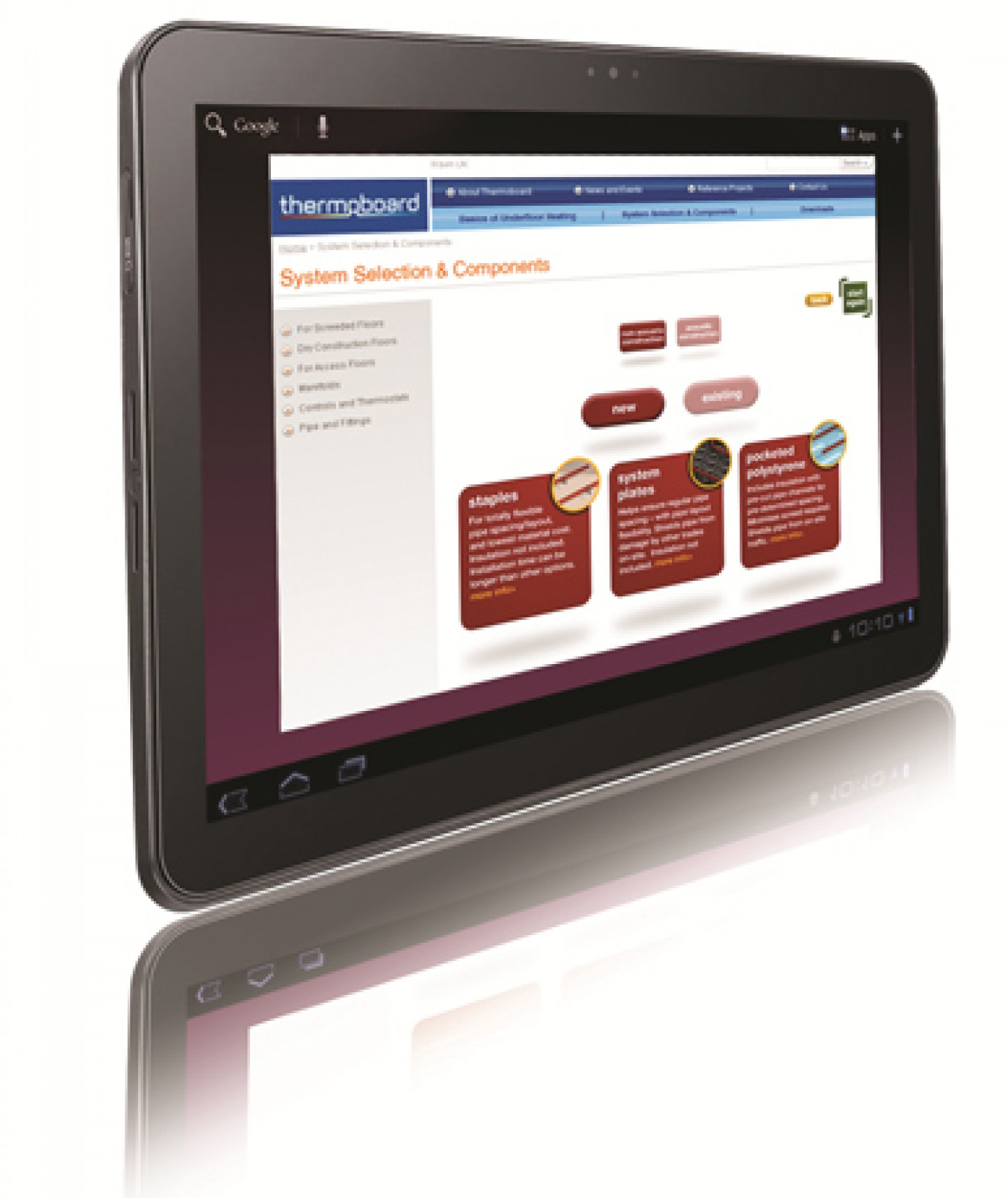The first selection is to choose what type of floor – screeded, dry construction or raised access – and then whether it is acoustic or non-acoustic construction, new or existing. From this point users can drill more deeply to tailor the UFH to their own needs. For example, if the floor is of dry construction, non-acoustic and new, the user will be given a choice between a battened, joisted and floating floor. If the floor is joisted, there is then a choice of “access from above” or “access from below”.
If “access from below” is chosen SystemSelect then posts up details of Thermoboard’s foiled polystyrene product which consists of insulation panels with a pre-fitted heat diffuser and pre-routed channels for UFH pipe – the ideal solution for a floor that is dry construction, non-acoustic, new, joisted and accessed from below.
Alternatively, if the floor requires “access from above” the tool puts forward two alternatives – foiled polystyrene or modular wood, in which tongued and grooved panels incorporate the UFH pipe, enabling the UFH and floor deck to be installed simultaneously.
SystemSelect streamlines the specification process so that in a matter of minutes and a few mouse clicks, anyone choosing a UFH system can understand which of Thermoboard’s comprehensive selection of UFH systems will suit their project, without having to consult all the product literature. Once the relevant UFH systems are shown, specifiers can then download the detailed product literature from the Thermoboard website or order the hard copy online.
SystemSelect demonstrates Thermoboard’s commitment to making the latest technologies and methods of communication work for its customers and clients through constant improvement. While still supported by the conventional technical literature in hard copy format, this online service helps to quickly make clear which systems will suit a project.
